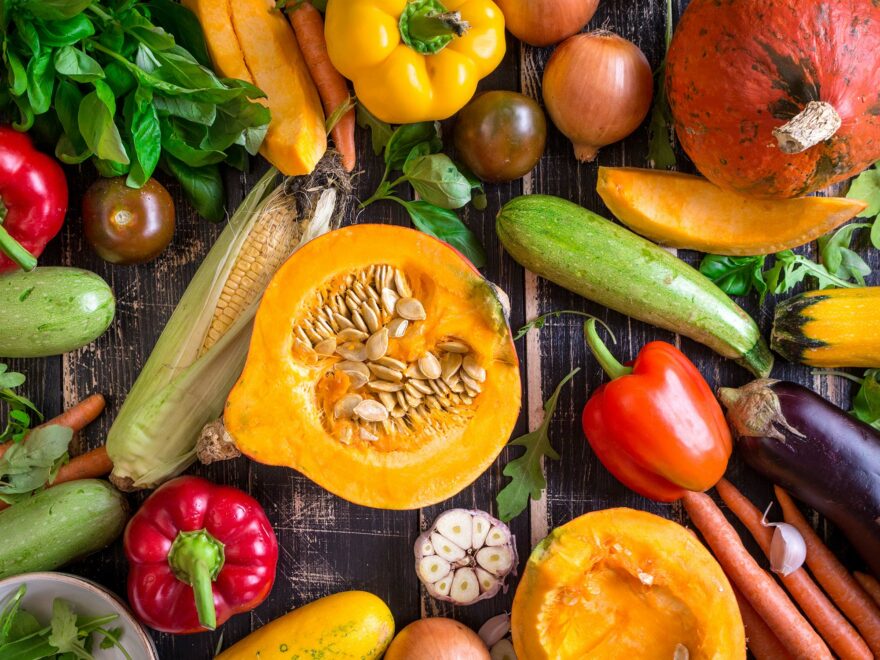At a young age, most of us learn about the 4 seasons, from which months comprise each quarter of the year to the unique weather patterns we generally associate with each season. The knowledge of what’s growing during these different times of year, however, now that’s a bit less well-known. In fact, the secrets of seasonal produce seem a bit like insider knowledge, privy only to restaurateurs, food critics, and cookbook authors.
In an effort to bring this information to the people who need it most, we’ve put together a complete guide to seasonal vegetables! We’re sharing everything you need to know about when and how to score the best in season produce, no matter the time of year. Join us as we work our way through the best seasonal food your local veggie patch has to offer, from artichokes to zucchini!
What Does “In Season” Actually Mean?
Ever notice that during the springtime, every restaurant menu everywhere is suddenly filled with dishes that feature candy-sweet peas, snappy green beans, and crunchy asparagus? Or how about in the autumn when piles of creamy sweet potatoes and crunchy carrots are fixtures of most folks’ holiday tables?
The reason for these well-known correlations is seasonality! Simply put, fruits and vegetables are considered to be in season when they reach the peak of their particular growing season, becoming the most plentiful and tastiest versions of themselves.
Our Guide to Which Vegetables Are in Season Now
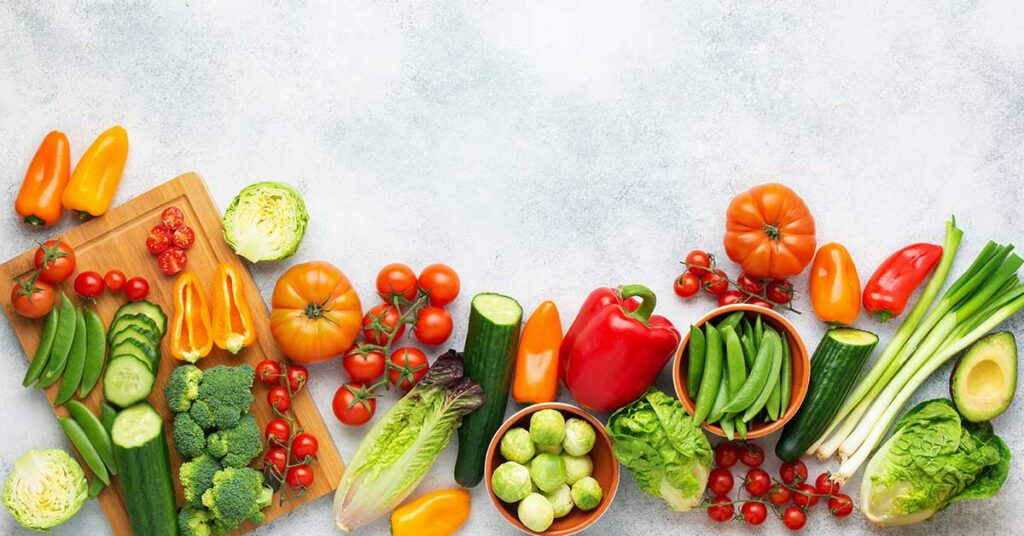
The season for any given vegetable will of course vary depending on location, rainfall, weather patterns, and any other variable growing conditions. Therefore, the following guide is a generalization of which vegetables are in season throughout the year in North America.
Keep in mind that even in this region, a range of different conditions will be experienced! When the Gulf Coast is muggy and hot, New England may be cool and crisp. These factors greatly affect what produce is growing and harvestable, and not all items will be available even if they are listed as in season on our seasonal produce calendar.
As we make our way through the four seasons in the guide that follows, we’ll discuss a few of the vegetables that are at their peak in each of these different times of the year. You’ll notice there are several vegetables which are considered to be in season over the course of multiple seasons and we’ll be sure to mention those when they come up!
Spring: March 20th to June 21st
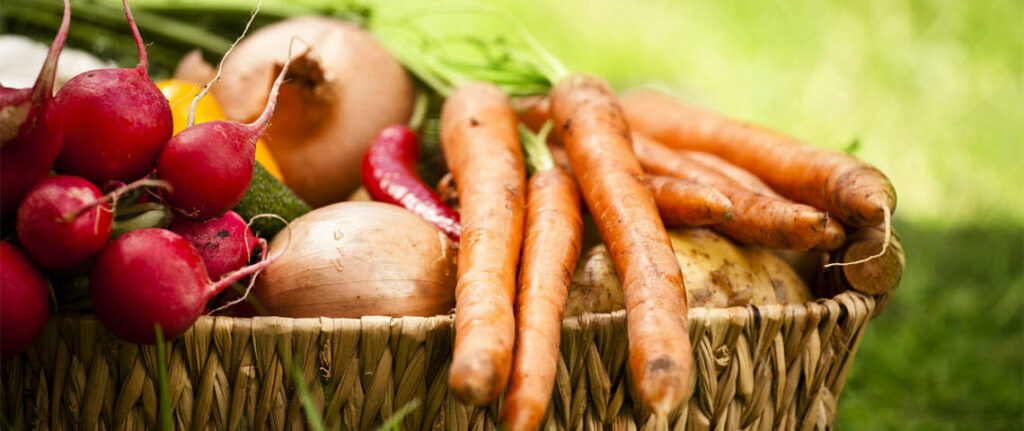
As the cold temperatures of winter become a distant memory, new life quite literally “springs” up across the country. Winter makes its best effort to hold a firm grasp however, as chilly days frequently interject those first few weeks of warmth. This mixing of temperatures also causes frequent precipitation in the form of rain for most areas, and snow for others.
This unpredictability in terms of temperature and precipitation can be rough on plant life, so the vegetables that are in season during the spring tend to be quite hardy, frost resistant, and moisture-loving! Some vegetal stars of the spring season are:
- Artichokes: you may start to see these unusual looking vegetables as early as March, but they generally peak in May. Look for artichokes that are large and heavy with nicely compact leaves.
- Asparagus: this harbinger of spring does well in cold conditions and comes in the well-known green variety as well as white and purple!
- Broccoli: like other cruciferous veggies, broccoli loves cool weather and is even tolerant of freezing temperatures and overnight frost.
- Carrots: this crunchy root vegetable has long been synonymous with the spring season, and for good reason! All varieties of carrots–orange, red, yellow, purple, and white–peak in the late spring and are wonderful for eating fresh or making into homemade pickles!
- Collard Greens: these sturdy leafy greens love cool weather and are best enjoyed through April.
- Fava Beans: also known as broad beans, fava beans are one of the most beloved spring vegetables around the world, having been cultivated for at least 8000 years!
- Herbs: some herbs can be quite sensitive to either hot or cold extremes of temperature. Therefore the generally mild conditions of spring are ideal for intoxicatingly aromatic herbs like chives, parsley, and dill.
- Lettuce: many leaf and head lettuce will bolt–that is, turn into seed-producing mode–in the presence of hot weather, so lettuce is best enjoyed in its fresh, tender spring state.
- Mushrooms: as a fungus, mushrooms love the excess moisture that comes along with spring weather. Keep an eye out for coveted wild varieties like morels and oyster mushrooms.
- Peas: as mentioned above, the appearance of peas is one sure sign that you’ve got spring on your hands!
- Radishes: this spicy root veggie is often one of the first things up as spring season warms up! Look for varieties like cherry belle, French breakfast, and watermelon radishes at your local farmer’s market.
- Spinach: this nutrient packed green is typically at its freshest and most tender during the month of May.
- Spring Onions: not to be confused with green onions (which are actually the same as scallions, by the way!), spring onions are typical onions which are harvested before the bulb grows very large. This results in a sweeter, more tender allium experience!
- Turnips: typically thought of as a fall/winter crop (more on that later!), the type of turnips that come into season during the spring are baby turnips. These turnips are sold in bunches that look like small white radishes.
Summer: June 22nd to September 21st
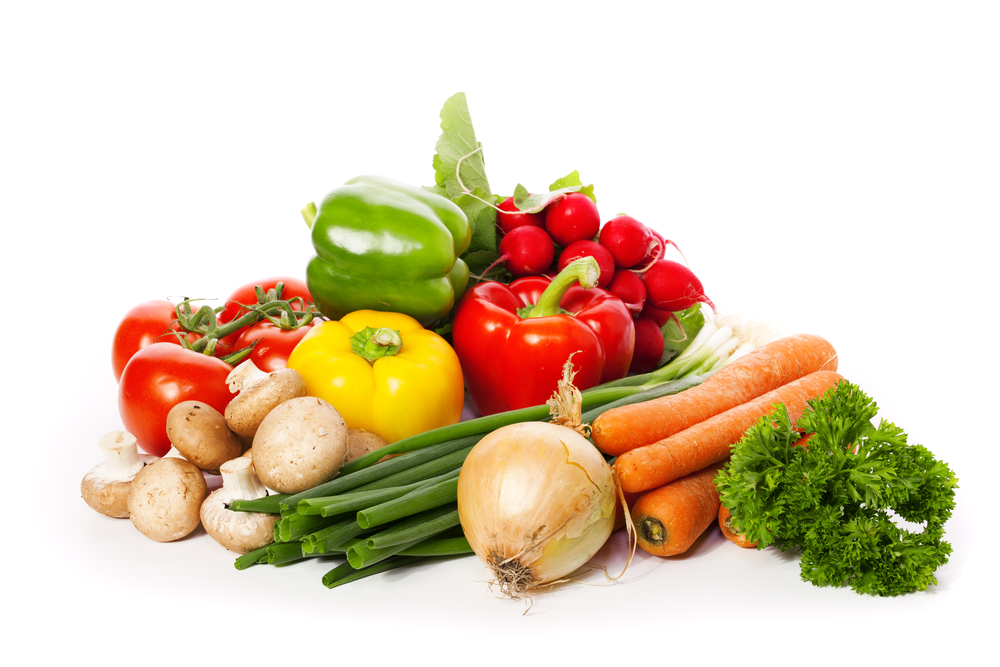
As the cooler days of spring become obsolete, full-force sunshine and high temperatures take hold over much of the country. This heat may be either exceptionally dry or supremely muggy depending on region and of course, different vegetables will thrive under different circumstances.
While there are plenty of vegetables that do come into season during the summer months, there are also a lot of plants that merely use the hottest months of the year as a time for growth. Some vegetable plants grow all summer but do not actually yield any edible produce until fall appears on the horizon. As you can see, the following list of veggies that say “bring on the heat!” is a bit shorter than the other seasons:
- Beets: you might think of hardy, earthy beets as a depth-of-winter crop but in reality, these rouge colored roots are ready for harvest in most areas starting in June! This is also prime time for beet greens, those leafy tops which you can cook up like any other bitter green.
- Carrots: carrot season rolls right on into the summer, just be aware that the longer carrots stay in the ground during hot months, the more fibrous and woody their texture will become.
- Celery: though this staple is available any time of year in almost every market you’d walk into, late summer is when its flavor and abundance are at an all time high!
- Corn: though corn mazes and husks of multicolored rainbow corn are autumnal stand-bys, the corn harvest actually begins in August or September for most regions.
- Cucumbers: like corn, cucumbers also live for the heat of summer time! Depending on the variety, these irresistibly refreshing veggies are at their peak from June through August.
- Eggplant: most varieties of eggplant are at their best in mid to late summer, and sometimes linger on into the fall months as well.
- Garlic: while garlic does indeed begin growing in the springtime, and is often one of the first pops of green to be seen, it is not fully developed and harvestable until midsummer.
- Green Beans: these legumes are one of the major summer crops in most growing regions. Green beans are actually not any one particular cultivar of bean, rather they may be any of several bean varieties which are harvested before maturing and consumed pod and all.
- Herbs: fairer herbs like dill may wither in the heat of summer, but hardier aromatics like basil, oregano, and cilantro come into their own at this time.
- Peppers: whether you like sweet bell varieties or out of this world hot chilies, summer is the time for crunchy peppers!
- Summer Squash: it’s not called summer squash for no reason! These relatives of the melon are moisture rich and come in varieties like zucchini squash, patty pan squash, and yellow crookneck squash.
Fall: September 22nd to December 20th
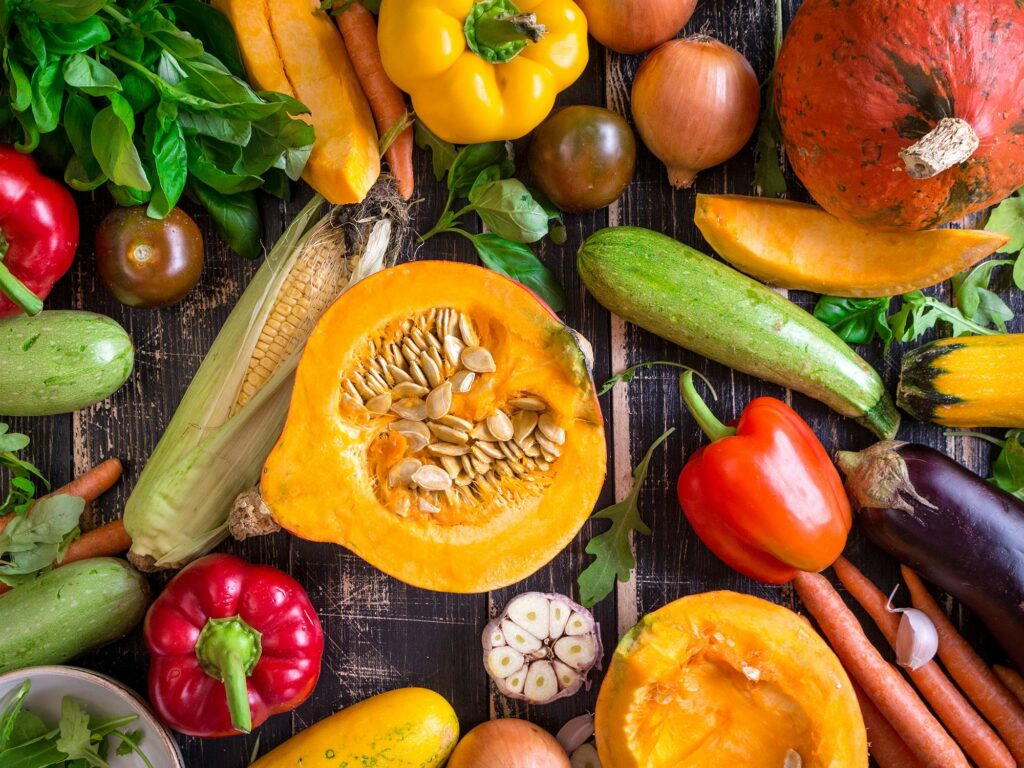
Fall is the season of bounty, there’s no doubt about that. The dropping temperatures serve to give some of those cold-weather loving spring crops we discussed earlier a second season, while more slowly developing vegetables that have been growing all summer finally become harvestable.
This coalescence of these crop types leads to an interesting mix of veggies that come into season during the fall like beets, peas, potatoes, radishes, and winter squashes as well as leafy greens like kale and Swiss chard. Let’s discuss a few of our favorite autumnal produce options:
- Beets: as mentioned above, beets begin to come into season during the summer but they really max out in the fall months! They are an excellent autumn crop as they can withstand those overnight frosts that are bound to happen.
- Broccoli: this is one spring crop which fares equally well in the fall. As a brassica, broccoli is well-known for its protection from the cold–a good thing to have as temps begin to decline across the growing regions.
- Brussels Sprouts: fall is the peak season for brussels, that’s for sure! Seeing as they can take up to 3 full months to mature, brussels rely on the long summer months to be ready for a fall harvest.
- Cabbage: cabbage continues to be amazingly prolific as the warm weather dwindles. Try using it to make your own kimchi, ensuring you’ll have some of that crunchy vegetal goodness all winter long!
- Cauliflower: cauliflower season peaks between September and November and if you’re lucky, you might even spot unique varieties like Romanesco or cheddar cauliflower.
- Ginger: yes, ginger is a vegetable! It is not actually a root like some folks may categorize it as, rather it is a type of underground stem known as a rhizome.
- Herbs: branchy herbs like sage and thyme rule the fall!
- Kale: though kale chips are always in season, fresh varieties like lacinato kale and curly kale are best in late fall and their season can even carry on into early winter as well.
- Lettuce: head lettuce varieties such as butterhead and romaine are among the most optimal for fall weather as their arrangement of leaves offers them some protection from chill.
- Mushrooms: while spring is a popular mushroom hunting season, fall is on a whole other level! Oyster mushrooms, maitake mushrooms, puffball mushrooms, and chicken of the woods mushrooms are plentiful in many regions at this time of year.
- Potatoes: one of the most popular tubers in cuisines all over the world, the humble potato is at long last ready for harvest in the fall. Idaho potatoes are a classic choice but also look for Yukon gold, fingerlings, purple potatoes, new potatoes, and russets.
- Pumpkin: if there is any one item of produce that is representative of the autumn season, it’s the pumpkin! This versatile squash can be used in any number of sweet or savory recipes, such as this Indian Roasted Pumpkin Soup.
- Sweet Potatoes: colloquially referred to as yams (even though the true yam is an entirely different species altogether far less commonly seen), these sweet tubers are at their best in the fall and may come in white, orange, and purple varieties.
- Swiss Chard: though it can look a bit like festive celery, Swiss chard is actually in the beet family, explaining the origins behind its earthy and slightly bitter taste.
- Winter Squash: pumpkins are just one type of winter squash, but there are many other varieties that come into season during the fall. Some notable species are acorn squash, butternut squash, kabocha squash, and delicata squash.
Winter: December 21st to March 19th
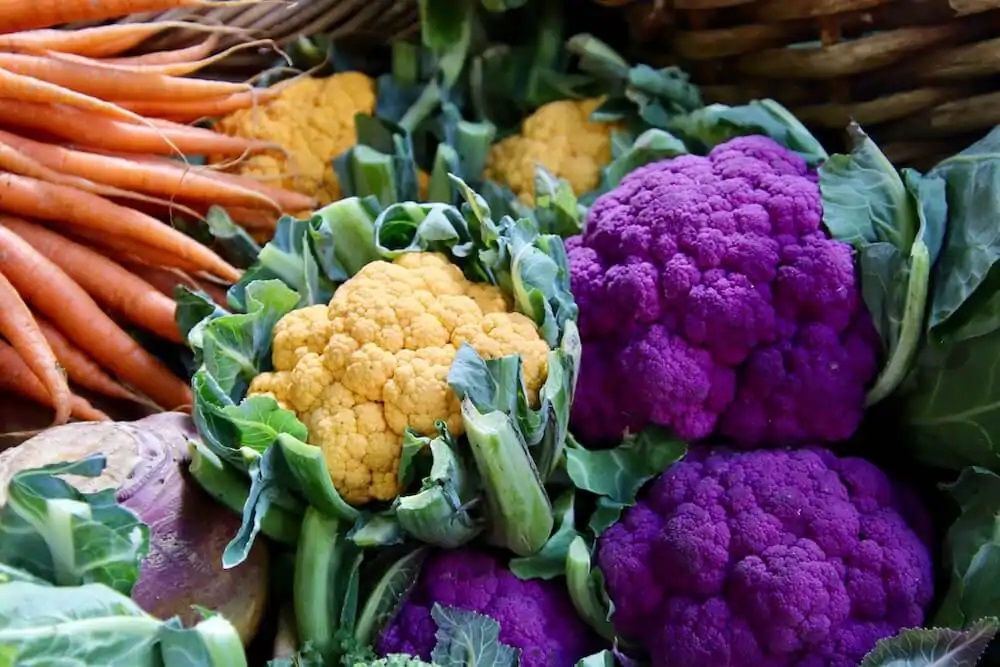
When thinking about winter, most folks don’t necessarily equate it with bountiful piles of fresh vegetables. It’s true, winter is by far the slowest season as far as growing is concerned but even in the depths of those chilly months, there is fresh and seasonal food to be found!
Just like certain animal species–we’re looking at you polar bear!–are naturally equipped to handle cold conditions, some plants thrive in crisp weather as well. A number of vegetables that are in season during the winter are:
- Beets: that’s right, these roots just keep on hanging in there despite subzero temperatures. In many regions, beets could even be left in the earth all winter long without suffering major damage!
- Brussels Sprouts: while brussels plants in more northern areas of the country cease production in November, in slightly warmer regions they continue producing all winter before wrapping up their season in February.
- Cabbage: not all cabbage varieties are tolerant of the cold weather, but there are some who fare well, especially winter cabbage, also known as “late-season cabbage”.
- Kale: as mentioned above, kale is one crop that carries on its growth cycle from fall through winter as it can handle overnight frost, though it should be harvested before major snowfall begins.
- Leeks: many varieties of this allium can be “overwintered”, meaning they will survive a winter sown in the earth so long as they are roughly protected by straw or mulch.
- Onions: another tough allium, onions are excellent winter veggies for the fact that they can handle the cold as well as the fact that they can remain in cold storage for so long after harvest. They’re the perfect jumping off point for a winter season inspired batch of Minestrone Soup!
- Parsnips: these similar looking relatives of the carrot actually require frost exposure in order to convert starches to sugars, thereby peaking in their characteristic sweet nuttiness during the winter months.
- Rutabagas: one look at a rutabaga and you’d think it should have no problems surviving a nuclear blast, let alone a cold snap or two. This cross between the turnip and the cabbage is typically most abundant in December.
- Turnips: while baby turnips peak in the spring, full size turnips are all the rage come winter. The subtly spicy roots are harvested all season long before dwindling in March.
- Winter Squash: our list of winter vegetables certainly wouldn’t be complete without the namesake squash! While these veggies should be picked before the cold weather gets too serious, they can remain fresh without refrigeration all winter long.
Vegetables in Season FAQs and Tips
Why Are In Season Vegetables Better?
Aside from coming across as super knowledgeable to all of your friends, there are a number of benefits to eating vegetables that are in season! Generally speaking, in season fruits and vegetables are:
Lower in Price.
Since vegetables that are in season also tend to be the most abundant, this causes a temporary drop in the price of these items since there is plenty to go around! In addition, veggies that are in season in your local area don’t have to travel all that far to get to you, further reducing costs to farmers and consumers alike.
More Environmentally Friendly.
In addition to reducing the carbon footprint by requiring less transit time, vegetables growing in their natural season do so freely and without much coaxing on the part of farmers. This means that fertilizers and other interventional aids are less necessary. Also, seasonal rotation of crops allows the soil to go through more natural cycling, as one crop may deplete soil of certain nutrients while the next naturally replenishes.
Superior in Flavor and Freshness.
Without a doubt, seasonal veggies taste the best! More than likely you’ve been disappointed by some extremely out of season asparagus in the dead of winter or struck out on finding any corn on the cob in the springtime.
When vegetables are out of season they are typically harvested in an underripe state in order to survive whatever long journey they are in for. This takes a huge toll on their natural flavor development as well as greatly increases the length of time between harvest and your dining table.
What Are the Health Benefits of Eating Seasonally?
In addition to reducing your exposure to chemical fertilizers, there are a number of other health benefits associated with choosing to eat vegetables that are in season.
First and foremost, since the produce is able to ripen naturally and to its full potential, there is an increased number of important nutrients and phytochemicals in veggies that are in season.
Also, along the same school of thought as “eat the rainbow”, seasonal eating exposes you to a wider range of fresh produce. Instead of eating the same few vegetables month after month, year after year, cycling your produce choices with the seasons ensures that your body is exposed to all of the different goodies each unique vegetable has to offer.
Where Do You Buy Vegetables That Are in Season?
Anywhere! Once you have the knowledge of which vegetables are in season at what times of year, you can use it to inform your purchasing decisions, no matter what type of store or market you happen to find yourself in.
Farmer’s markets are great places to find seasonal produce as local farmers are always going to bring their freshest and most of-the-moment goods to the market for sale. Grocery stores and specialty shops are another great place to shop for locally seasonal vegetables as well because believe it or not, many stores deal with local farmers and producers directly!
What Vegetables Are in Season? It Depends!
As you can see, when it comes to understanding which vegetables are in season at any given time, the answer will be greatly impacted by regionality and climate conditions. Our version of the seasonal produce calendar consists of general information based on the vegetable growing seasons across North America, but areas of the world that don’t experience much seasonal fluctuation will of course have different cycles of crops.
If you’d like to round out your knowledge of season produce, be sure to check out our full guide to fruit in season for a comprehensive understanding of seasonal eating–from cabbage, carrots, and cherries all the way through spinach, strawberries, and summer squash! Now go forth and conquer the produce department, once and for all.
